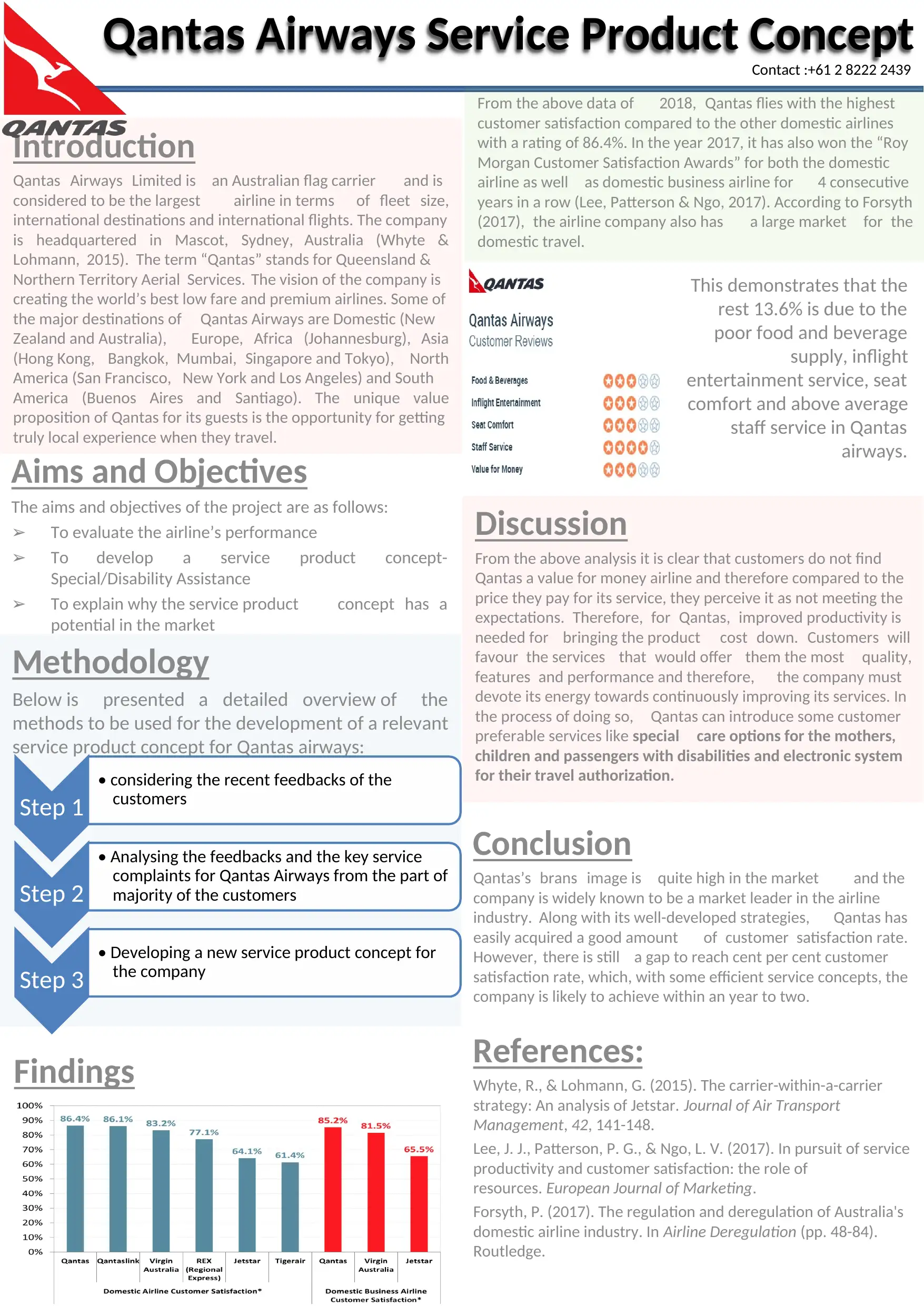Marketing Project: Qantas Airways Service Product Concept
VerifiedAdded on 2022/08/29
|1
|713
|20
Project
AI Summary
This project analyzes Qantas Airways' service performance and develops a new service product concept based on consumer feedback. The project begins with an introduction to Qantas, its vision, major destinations, and value proposition, highlighting its high customer satisfaction rating. It then outlines the aims and objectives, which include evaluating airline performance, developing a service product concept, and explaining its market potential. The methodology involves analyzing customer feedback and identifying key service complaints to develop a new service product concept. Findings indicate that customers perceive Qantas as not offering value for money, necessitating improved productivity and service enhancements. The project suggests introducing special care options for mothers, children, and passengers with disabilities, along with an electronic system for travel authorization. The conclusion reaffirms Qantas's strong brand image and market leadership, emphasizing the potential for further customer satisfaction improvements through efficient service concepts. The project uses sources to support the analysis.






![[object Object]](/_next/static/media/star-bottom.7253800d.svg)